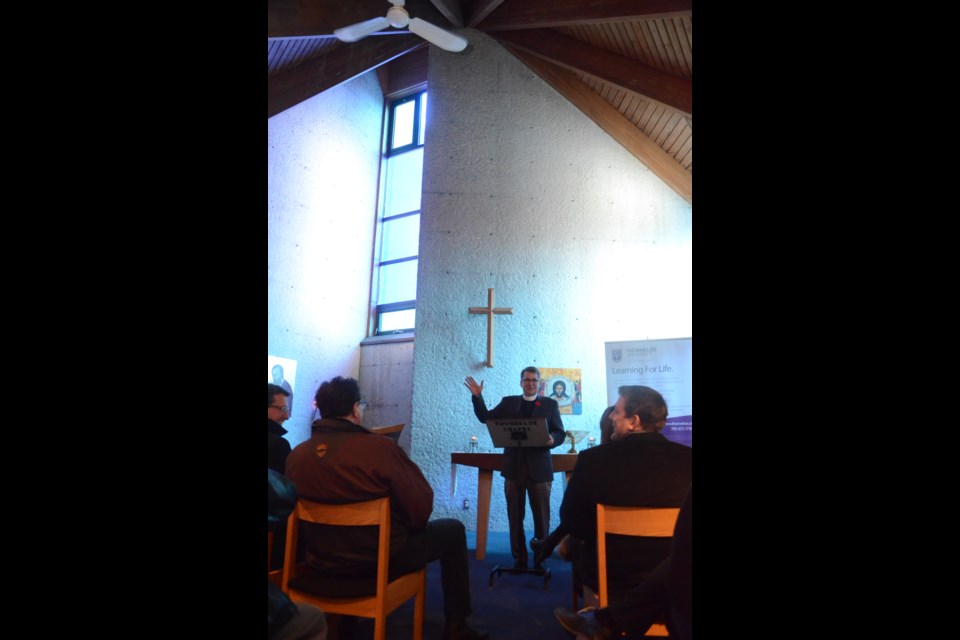A chapel at Thorneloe University — an affiliate of Laurentian University in Sudbury — has garnered municipal and provincial recognition with two architectural honours.
The unique design of the Fielding Memorial Chapel of St. Mark — designed by Sudbury architect Arthur Townend Sr., and built by Neil Smith Construction Ltd. in 1968 thanks to a financial gift from the locally prominent Fielding family — shared the Ontario Association of Architects Landmark Award this year, alongside the Ontario Science Centre in Toronto.
The award pays tribute to buildings constructed before 1992 that demonstrate architecture's beauty, endurance and lasting contribution to the community and to society.
The chapel was also recently listed in the City of Greater Sudbury's Heritage Registry, which recognizes its importance from a cultural perspective, and protects it under the Ontario Heritage Act.
“This award is tremendous for Thorneloe, and a great testimony to this space,” said Rev. Robert Derrenbacker, president, provost and vice-chancellor of Thorneloe. “I think it marks the important contribution it has made to the Thorneloe campus, to Laurentian University and to the City of Greater Sudbury.
“It's interesting to think this chapel was designed almost 50 years ago, and now it's being recognized for its incredible contribution to the art of architecture.”
When the chapel was first built, it was dedicated to St. Mark. Its original design, featuring a series of seven concrete walls placed in ascending spiral formation, last to this day. The natural light that reflects on the concrete walls transforms the colour of the worship space throughout the day, creating a warm and welcoming sanctuary.
It's those two aspects of the chapel that inspired McEwen School of Architecture Prof. Mark Baechler to nominate it for the provincial architecture award.
“This chapel is a perfect example of what a sacred space can be – it responds wonderfully to the site on which it's placed,” he said.
Baechler first became aware of the chapel 10 or 15 years ago, when his wife brought him there to show him its design.
“What's remarkable about this chapel is its ability to take the conventional elements of a Christian church and radically reimagine what those elements are,” Baechler said. “It takes the traditional elements like the altar space, the narthex and the nave and reinterprets them in a way we rarely see in Christian architecture.”
Of particular interest to many who visit the chapel, he said, is its ability to take the light filtering in through its stained-glass windows and to change it as the day goes on. It starts with the sun rising in the east, when a deep purple-blue light descends into the chapel, and it changes dramatically to a cyan then soft yellow in the evening.
“I think the chapel's sensitivity to sculpt the light is particularly important because it's an Anglican church and a place of worship,” Baechler said. “In the Bible, God says let there be light, and there's light, and architects have been sculpting light and experimenting with it ever since. Arthur Townend was a master of sculpting light, and we see that in this chapel.”
Baechler even uses the chapel as a case study for his students.
Arthur Townend Jr., who attended the ceremony, said his father would have really appreciated the recognition of his work.
“He was a modest guy, but he really would have liked it,” he said. “It's great, because people usually just drive by buildings and don't really appreciate all the hard work that went into its design.
“My father was a really good designer, and because of that, Sudbury has a lot of very fine buildings that have stood the test of time, for example, city hall, St. Andrew's Place and Laurentian Hospital.”




